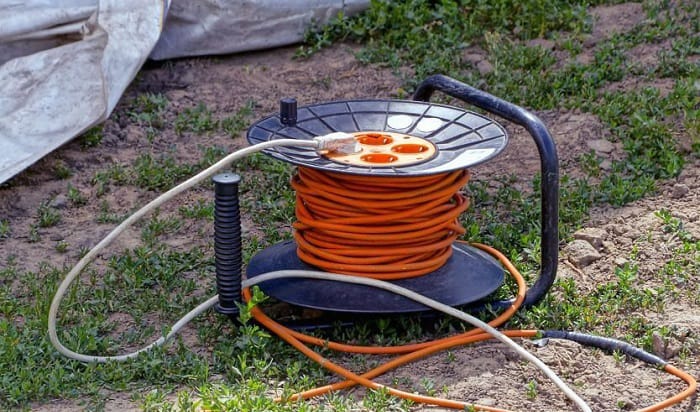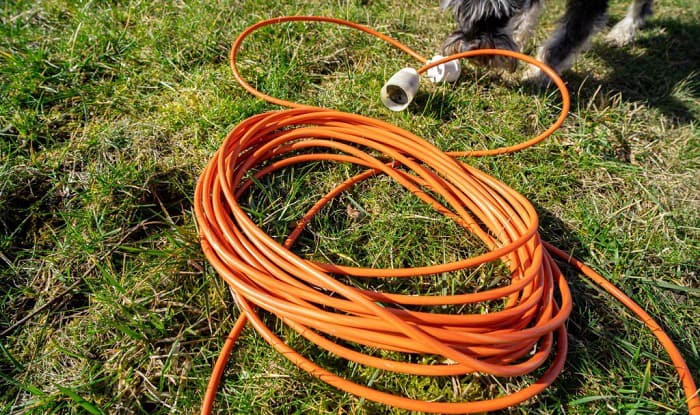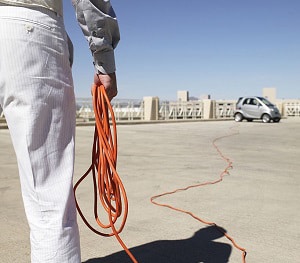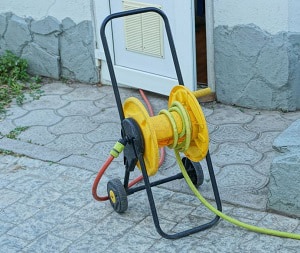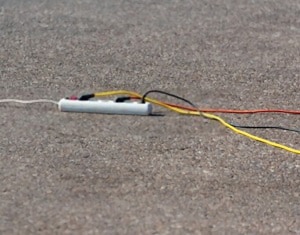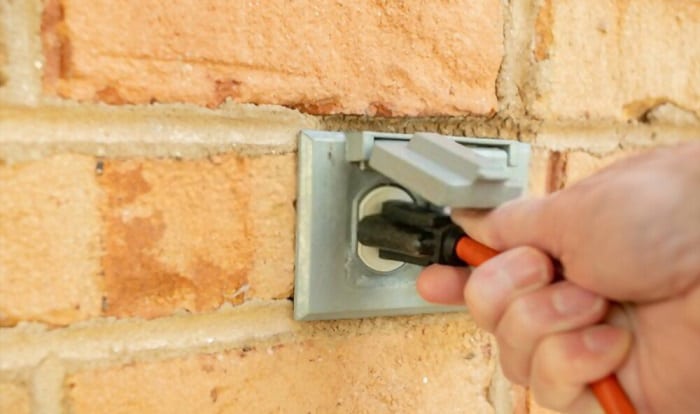Nowadays, it is essential to have an extension cord in any house. However, not all types of extension cords can handle external elements like rain, wind, or dirt. Some cables are only rated for indoor use and can be hazardous when taken outside.
To know how to tell if an extension cord is for outdoor use, read below.
Table of Contents
How to Know if an Extension Cord is for Outdoor Use?
There are many ways you can identify an outdoor rated extension cord. Below are some of the easy ones.
1. Rating Indicator
When looking for an extension cord for outdoor use, you may want to see if it has a “W” sign printed on the cover or insulation. This letter stands for weather-resistant compound, which means it is heavy-duty and rated for outdoor usage.
You can see this sign on the packaging, along with the other features of the cord.
2. Insulation
Insulation is another feature that distinguishes an outdoor extension cord. Its insulation is typically significantly thicker and constructed primarily of heavy-duty rubber, plastics, or vinyl, making it heavier and more robust.
3. Color
The color of the insulation can also be the basis to determine whether the cord is rated for use outside. Normally, you’ll see bright yellow, blue, and green extension cords for outdoor use.
There are orange extension cords waterproof and brown extension cords waterproof products as well, perfect for wet and moist conditions.
4. Plugs
It is also possible to identify if a cable is rated for outdoor applications by looking at its plug. An outdoor cord is always equipped with three prongs on the plug.
Three prongs indicate a grounding feature that should go with a GFCI outlet for additional safety. This is essential to prevent the risk of electrical hazards that can result in electrocution or fire.
5. Amperage
One of the attributes of outdoor extension cords is a higher amp rating compared with indoor ones. This means they can hold more power, making them perfect for energy-intensive devices.
Technically, the wire gauge size or AWG can determine the amp rating of a cord. As the number of AWG decreases, the wire size increases, or the lower the number, the larger the wire.
The AWG is often seen with the rating indicator on the cord or the packaging label if it is new.
FAQs
Which Kind of Extension Cord is Safe to Use Outdoors?
Generally speaking, the only extension cord that can be safely used outside is the one that is outdoor-rated. This type of power cord has a “W” mark.
An outdoor cable should also be a waterproof extension cord.
Related: Detailed Steps to Run Extension Cord From Inside to Outside.
Is There a Difference in Indoor and Outdoor Extension Cords?
Yes, there are many differences between indoor and outdoor extension cords.
One of these is the soft and flexible cord insulation of an indoor power cord. Meanwhile, the outdoor ones mostly have durable insulation, making them tough and capable of withstanding direct sunlight or the rain.
Furthermore, there is also a big difference regarding the plug. Unlike indoor cables, there is no two prong outdoor extension cord, since it is always required to have a grounded connection for additional safety.
What Happens if You Use Indoor Extension Cords Outside?
If you use indoor extension cord outside for a long time, any of its parts can be damaged. When this happens, it may lead to a spark and fire or electrocute anyone around it.
Ways to Protect Outdoor Extension Cord From The Rain
There are many ways you can protect your extension cord from rain. It can be a DIY method or using a protective device available on the market.
You can use the cheapest and easiest DIY method, which is using a cling wrap to cover the connection.
Or you can purchase a weatherproof cord cover tool to easily and safely secure the plug of your extension cord.
Conclusion
Using the wrong cables for electrical applications can be hazardous for everyone in your house.
For this reason, you should know how to tell if an extension cord is for outdoor use to avoid injury and property damage.
Also, note that this item is not designed for permanent use. If you need a permanent outdoor extension cord, I recommend consulting a professional as well as your city electrical inspector for guidance.

I am Edwin Jones, in charge of designing content for Galvinpower. I aspire to use my experiences in marketing to create reliable and necessary information to help our readers. It has been fun to work with Andrew and apply his incredible knowledge to our content.

